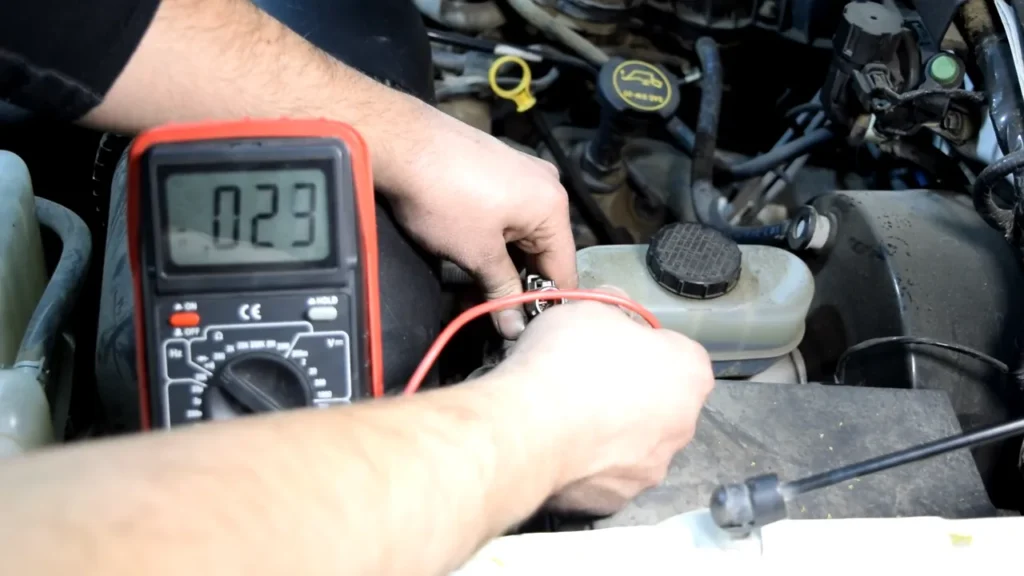Introduction to P0100 Code
Ever been cruising down the road when suddenly, your car’s check engine light starts flashing? If a diagnostic tool returns the P0100 code, you’re dealing with a Mass or Volume Air Flow Circuit Malfunction. But what does this mean, exactly?
The Role of the Mass Air Flow Sensor
The Mass Air Flow (MAF) sensor plays a crucial role in your vehicle’s engine management system. It measures the volume and density of air entering the engine, providing this data to the Engine Control Unit (ECU). The ECU then adjusts the fuel injection and ignition timing based on this information.

Understanding the Mass or Volume Air Flow Circuit
Before delving into the specifics of the P0100 code, let’s break down what we mean by the “Mass or Volume Air Flow Circuit”.
The Importance of the Air Flow Circuit
The air flow circuit is pivotal to the efficient functioning of your vehicle. It’s responsible for delivering the correct mix of air and fuel to your engine – a critical factor for optimal performance and fuel efficiency.
How the Air Flow Circuit Works
The air flow circuit starts with the intake of air through the filter, which then travels into the combustion chamber. The MAF sensor is located along this route and measures the mass of the incoming air, transmitting this information to the ECU.
Causes of the P0100 Code
The P0100 code could stem from various issues, including:
Dirty or Damaged MAF Sensor
A common cause of the P0100 code is a dirty or damaged MAF sensor. Over time, dust and debris can accumulate on the sensor, reducing its accuracy.
Faulty Electrical Connections
Faulty electrical connections, such as broken wires or loose connectors within the MAF sensor circuit, can also trigger this trouble code.
Air Leaks in the Intake System
Air leaks downstream of the MAF sensor can affect the sensor’s readings, potentially resulting in the P0100 code.
Symptoms of the P0100 Code
What signs might indicate a P0100 code issue? Here are some common symptoms:
Engine Performance Issues
You might notice a decrease in engine performance, including poor acceleration, rough idling, or even stalling.
Check Engine Light Activation
The activation of the check engine
light is one of the most apparent signs. This warning light typically turns on when the ECU detects a problem, such as a malfunction in the MAF sensor circuit.
Diagnosing and Fixing the P0100 Code
Once you’ve identified the P0100 code, what’s next? Let’s explore the steps to diagnose and fix this issue.
Steps to Diagnose the P0100 Code
- Scan the vehicle: Use a diagnostic tool to confirm the P0100 code and check for other related trouble codes.
- Inspect the MAF sensor: Check the MAF sensor for any signs of damage or dirt accumulation.
- Check the electrical connections: Inspect the wiring and connectors in the MAF sensor circuit for any visible damage or loose connections.
- Check for air leaks: Inspect the intake air system for leaks, particularly downstream of the MAF sensor.
How to Fix the P0100 Code
- Clean or replace the MAF sensor: If the MAF sensor is dirty, clean it using a suitable MAF sensor cleaner. If it’s damaged, replacement may be necessary.
- Repair or replace faulty electrical connections: If any wiring or connectors are damaged, repair or replace them as needed.
- Fix any air leaks: If any leaks are found in the intake air system, fix them to ensure accurate MAF sensor readings.
Preventing the P0100 Code
To avoid dealing with the P0100 code in the future, consider the following preventive measures:
Regular Vehicle Maintenance
Regularly servicing your vehicle can help catch and fix potential issues before they escalate into more significant problems.
Periodic Sensor Cleaning
Regularly cleaning your MAF sensor can prevent the buildup of dust and debris, ensuring accurate readings and optimal engine performance.
Conclusion
Understanding the P0100 code – Mass or Volume Air Flow Circuit Malfunction – is crucial for maintaining your vehicle’s performance and efficiency. By recognizing the causes, symptoms, and preventive measures, you can ensure a smooth ride and prolong your vehicle’s lifespan.
Frequently Asked Questions
1. What does the P0100 code mean? The P0100 code represents a malfunction in the mass or volume air flow circuit, often related to issues with the MAF sensor.
2. Can I drive my car with the P0100 code? While you may be able to drive with the P0100 code, it’s not recommended. This malfunction can lead to poor engine performance and decreased fuel efficiency.
3. How do I fix the P0100 code? Fixing the P0100 code involves diagnosing the issue – which could be a dirty or damaged MAF sensor, faulty electrical connections, or air leaks – and rectifying it by cleaning or replacing parts as necessary.
4. Can a dirty MAF sensor cause the P0100 code? Yes, a dirty MAF sensor can cause the P0100 code as it can disrupt the sensor’s ability to accurately measure the air entering the engine.
5. How can I prevent the P0100 code? Regular vehicle maintenance and periodic MAF sensor cleaning are effective ways to prevent the P0100 code.


